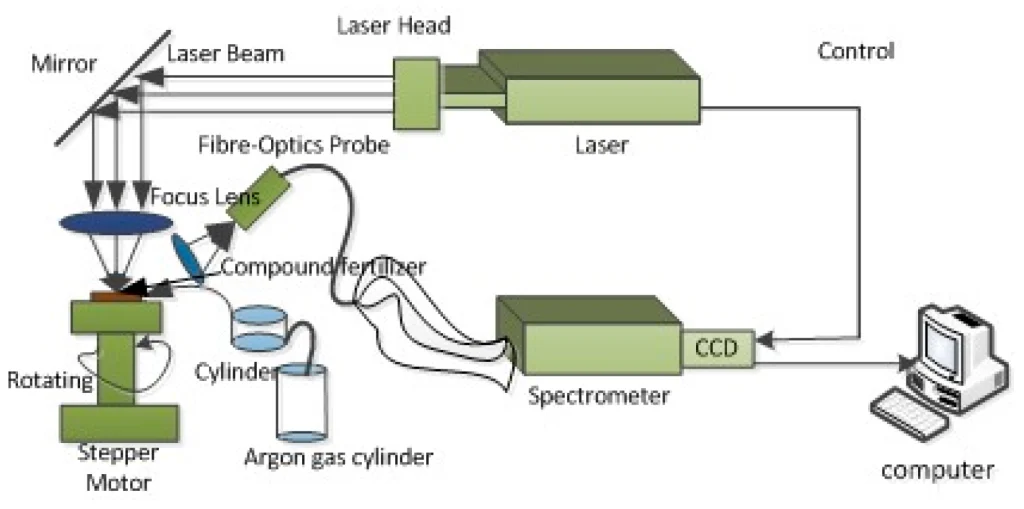
Project On Analysis Of Fertilizers For Class 12
Acknowledgement:
I am deeply grateful to my subject teacher, [Teacher’s Name], for their unwavering support and guidance throughout the duration of this project. Their expertise and valuable insights have been instrumental in shaping this project and enhancing my understanding of the subject matter. Their dedication to teaching and commitment to their students’ success have truly inspired me.
I would also like to extend my sincere appreciation to my parents for their constant encouragement and belief in my abilities. Their unwavering support and understanding have been invaluable in helping me overcome challenges and stay focused on completing this project.
Furthermore, I would like to express my gratitude to my classmates who have been an integral part of my academic journey. Their discussions, brainstorming sessions, and constructive feedback have played a vital role in shaping this project. Collaborating with them has not only enriched my learning experience but also fostered a sense of camaraderie and teamwork.
Lastly, I would like to acknowledge the contributions of all the individuals who provided assistance and resources during the course of this project. Their willingness to share their knowledge and expertise has been immensely valuable in enhancing the quality and depth of my research.
In conclusion, I am indebted to my teacher, parents, classmates, and all those who have supported me throughout this project. Their encouragement, guidance, and assistance have been pivotal in its successful completion.
Introduction:
In the world of modern agriculture, fertilizers are indispensable for promoting healthy plant growth, increasing crop yields, and meeting the ever-growing demand for food production. Fertilizers supply essential nutrients to plants, supplementing the natural soil fertility and addressing any nutrient deficiencies that may hinder optimal plant growth.
While fertilizers are essential, their effectiveness and appropriate application are crucial factors that directly impact agricultural productivity, environmental sustainability, and economic viability. It is essential to analyze and understand the composition of fertilizers, as well as their potential effects on soil health, plant growth, and the surrounding ecosystem. This project aims to delve into the analysis of fertilizers and highlight its significance in agricultural practices.
Analyzing fertilizers involves evaluating their nutrient content, understanding their chemical composition, determining their physical properties, and assessing their overall quality. By conducting detailed analyses, we can ascertain the nutrient levels, balance, and ratios present in different fertilizers. This information enables farmers, gardeners, and agricultural professionals to make informed decisions about fertilizer selection and application methods tailored to specific crops, soils, and environmental conditions.
The analysis of fertilizers also plays a vital role in ensuring the appropriate and responsible use of these agricultural inputs. Overuse or misuse of fertilizers can have detrimental effects, such as nutrient runoff into water bodies, soil degradation, and pollution of the environment. Understanding the composition and effectiveness of fertilizers helps mitigate these risks by allowing for precise and targeted application, reducing the environmental impact and optimizing nutrient uptake by plants.
Moreover, fertilizer analysis provides insights into the quality and consistency of various commercial fertilizers available in the market. It helps identify potential contaminants, such as heavy metals or harmful chemicals, which can pose risks to both human health and the environment. Through rigorous analysis, the project aims to contribute to the development of standardized guidelines and regulations to ensure the safety and efficacy of fertilizers used in agricultural practices.
By exploring the analysis of fertilizers, this project seeks to highlight the significance of this critical step in the agricultural value chain. It emphasizes the need for informed decision-making, responsible fertilizer use, and sustainable farming practices that prioritize both crop productivity and environmental preservation. Through a comprehensive understanding of fertilizer composition and analysis, farmers and agricultural stakeholders can maximize the benefits derived from these inputs while minimizing the potential risks associated with their usage.
In summary, this project aims to shed light on the analysis of fertilizers and its vital role in modern agriculture. By providing insights into their composition, effectiveness, and environmental impact, we can promote sustainable agricultural practices that balance productivity, profitability, and ecological stewardship.

Project on Analysis of Fertilizers:
The project on the analysis of fertilizers aims to explore and understand the characteristics, composition, and effectiveness of different types of fertilizers. It focuses on both organic and inorganic fertilizers commonly used in agricultural practices.
To begin the project, a variety of fertilizers will be selected for analysis. This selection may include commercially available fertilizers, organic compost, manure, and other commonly used fertilizers. The chosen fertilizers should represent a range of nutrient compositions, formulations, and application methods.
The project will involve conducting experiments and tests to determine various parameters and characteristics of the fertilizers. These tests may include assessing the nutrient content, such as nitrogen (N), phosphorus (P), potassium (K), and other essential elements. Additionally, the pH levels, moisture content, and potential contaminants of the fertilizers will be examined.
The analysis will require following established protocols and techniques for fertilizer testing. This may involve sample preparation, such as grinding or homogenizing the fertilizers, and employing appropriate analytical methods, such as titration, spectrophotometry, or chromatography, to determine nutrient concentrations.
Data collected from the experiments and tests will be carefully recorded and organized for analysis. Statistical analysis and comparisons will be conducted to evaluate the quality and effectiveness of each fertilizer type. The results will be compared against established standards, guidelines, or recommended nutrient levels for specific crops.
The project may also include field experiments or trials to assess the impact of different fertilizers on plant growth, yield, and overall crop performance. These experiments could involve controlled plots or comparative studies where different fertilizers are applied to specific crops or plants. The data collected from such experiments will further contribute to the analysis and understanding of the fertilizers’ effectiveness.
Throughout the project, documentation of the experimental procedures, observations, and results will be maintained. This will enable the project team to track progress, validate findings, and ensure reproducibility.
By analyzing various types of fertilizers and evaluating their nutrient composition, pH levels, and other parameters, the project aims to provide valuable insights into the quality and effectiveness of different fertilizers. The results of the analysis can be used to guide farmers, gardeners, and agricultural professionals in selecting appropriate fertilizers for specific crops, optimizing their application rates, and implementing sustainable farming practices.
Ultimately, the project on the analysis of fertilizers seeks to enhance agricultural productivity, promote responsible fertilizer usage, and contribute to the development of best practices in the field of agriculture. Through a comprehensive understanding of fertilizers and their analysis, this project aims to empower individuals in making informed decisions to maximize crop yields, preserve soil health, and minimize environmental impacts.

Example:
To demonstrate the process of fertilizer analysis, let’s focus on the analysis of two commonly used fertilizers: urea and compost. These fertilizers represent different types, with urea being an inorganic fertilizer and compost being an organic fertilizer.
First, samples of urea and compost will be collected from reliable sources. It is important to ensure that the samples are representative of the fertilizers commonly available in the market. The samples should be properly labeled and stored to maintain their integrity during the analysis process.
Next, various tests will be conducted on the fertilizer samples to determine their nutrient composition and other parameters. One of the key tests will involve analyzing the nitrogen, phosphorus, and potassium (NPK) content of the fertilizers. This can be done through methods such as spectrophotometry or titration. The NPK content is crucial as these nutrients are essential for plant growth and development.
Additionally, the pH levels of the fertilizers will be measured. pH affects nutrient availability and soil acidity or alkalinity. A pH test can be performed using a pH meter or pH indicator strips. This will provide information on whether the fertilizer is acidic, neutral, or alkaline.
The moisture content of the fertilizers will also be assessed. This can be determined by weighing the samples before and after drying them in an oven. Moisture content affects the storage stability and quality of the fertilizer.
Furthermore, potential contaminants in the fertilizers will be analyzed. This could involve testing for heavy metals, such as lead, cadmium, or arsenic, which can be present as impurities in some fertilizers. Contaminant analysis can be carried out using techniques like atomic absorption spectroscopy or inductively coupled plasma mass spectrometry.
Once all the tests are conducted, the results will be compared to recommended standards or guidelines set by regulatory bodies or agricultural institutions. These standards indicate the acceptable nutrient levels, pH ranges, and contaminant limits for each fertilizer type. By comparing the analysis results with the standards, the quality and suitability of the fertilizers can be evaluated.
Based on the analysis, conclusions can be drawn regarding the nutrient content, pH levels, moisture content, and potential contaminants of urea and compost. The results will help farmers and gardeners make informed decisions about the appropriate application rates and timing of these fertilizers for specific crops or plants.
It is worth noting that this example focuses on urea and compost, but the analysis of other fertilizers would follow a similar process. The specific tests conducted may vary depending on the fertilizer type and the parameters of interest.
By conducting such analyses, farmers and agricultural professionals can ensure that they are using fertilizers that meet the necessary quality standards and are suitable for their specific agricultural practices. This promotes efficient nutrient management, minimizes the risk of nutrient imbalances or environmental contamination, and ultimately contributes to sustainable and productive agriculture.

Importance of Project on Analysis of Fertilizers:
The analysis of fertilizers holds significant importance for various reasons. By conducting thorough analysis, farmers and gardeners can make informed decisions regarding the type and quantity of fertilizers to use, leading to enhanced crop yields and minimized environmental impact.
One of the primary benefits of fertilizer analysis is the ability to determine the nutrient content of different fertilizers accurately. This information allows farmers to select fertilizers that provide the necessary nutrients for their specific crops. Nutrient deficiencies can severely limit plant growth and reduce crop productivity. Conversely, excessive nutrient application can lead to environmental pollution, nutrient imbalances, and potential toxicity to plants and surrounding ecosystems. Through fertilizer analysis, farmers can ensure that plants receive the appropriate nutrient balance, promoting healthy growth and maximizing yields while minimizing the risk of nutrient-related issues.
Furthermore, proper fertilizer analysis enables the identification and prevention of nutrient deficiencies or toxicities. By understanding the nutrient content of fertilizers, farmers can tailor their fertilizer applications to address specific nutrient requirements of different crops. This proactive approach helps prevent nutrient deficiencies that can stunt plant growth, reduce yields, and negatively impact crop quality. Additionally, analyzing fertilizers helps prevent nutrient toxicities, as excessive nutrient levels can be detrimental to plants and disrupt their physiological processes. Thus, fertilizer analysis plays a crucial role in maintaining plant health and optimizing agricultural productivity.
In addition to improving crop productivity, the analysis of fertilizers also contributes to sustainable agricultural practices. Excessive use of fertilizers can lead to nutrient runoff into water bodies, causing water pollution and eutrophication. Fertilizer analysis allows farmers to accurately determine the nutrient content of fertilizers, enabling them to apply the correct amount and minimize excess usage. This promotes responsible nutrient management, reducing environmental harm and preserving water quality. By preventing nutrient runoff, fertilizer analysis supports the conservation of aquatic ecosystems and helps maintain a healthy balance in the environment.
Moreover, through fertilizer analysis, farmers can optimize the use of fertilizers and minimize wastage. It allows them to assess the nutrient availability in the soil and determine if additional fertilization is necessary. By avoiding unnecessary or excessive fertilizer applications, farmers can reduce production costs and minimize the environmental footprint associated with fertilizer production, transportation, and application.
In conclusion, the project on the analysis of fertilizers is of significant importance for agricultural practices. By enabling informed decision-making, ensuring nutrient adequacy, and promoting sustainable fertilizer use, fertilizer analysis contributes to maximizing crop yields, preventing nutrient deficiencies or toxicities, and reducing environmental impacts. Through the adoption of responsible nutrient management practices guided by fertilizer analysis, farmers can enhance agricultural productivity while safeguarding the environment for future generations.
How Can We Make It Happen?
To successfully conduct an analysis of fertilizers, the following steps can be followed:
- Define the objectives and scope of the project: Clearly establish the goals and objectives of the fertilizer analysis project. Determine the specific parameters to be analyzed, such as nutrient content, pH levels, moisture content, and potential contaminants. Define the scope of the project in terms of the types and number of fertilizers to be analyzed.
- Research and gather information on various fertilizers and their analysis methods: Conduct thorough research to gain knowledge about different types of fertilizers, their composition, and the appropriate analysis methods for each parameter. Explore scientific literature, publications, and reputable sources to gather relevant information.
- Collect fertilizer samples from reliable sources: Obtain representative samples of the fertilizers to be analyzed. Ensure that the samples are collected from reliable sources and are labeled accurately to maintain their integrity and traceability. Follow proper sampling procedures to ensure the samples are representative of the fertilizers available in the market.
- Set up a laboratory or collaborate with an existing laboratory for testing: Depending on the resources available, establish a laboratory equipped with the necessary instruments and equipment for fertilizer analysis. Alternatively, collaborate with an existing laboratory that specializes in fertilizer analysis. Ensure that the laboratory follows standard operating procedures and quality control measures.
- Perform tests to analyze nutrient content, pH levels, moisture content, and potential contaminants: Based on the objectives and parameters identified in step 1, conduct the necessary tests on the fertilizer samples. Utilize appropriate analytical techniques and methods for each parameter. This may include techniques such as spectrophotometry, titration, gravimetry, or chromatography, depending on the specific analysis required.
- Record and interpret the data obtained from the tests: Carefully record all observations, measurements, and data obtained during the analysis process. Organize the data in a systematic manner to facilitate further analysis and interpretation. Apply statistical tools and techniques, as applicable, to analyze the data and derive meaningful insights.
- Compare the results with established standards and guidelines: Compare the analysis results with established standards, guidelines, or recommended nutrient levels for fertilizers. This allows for an assessment of the quality and suitability of the fertilizers. Identify any deviations or discrepancies from the standards and evaluate the significance of these variations.
By following these steps, one can effectively conduct an analysis of fertilizers and obtain valuable insights into their nutrient composition, pH levels, moisture content, and potential contaminants. The results of the analysis can be used to make informed decisions about fertilizer usage, ensure nutrient adequacy, and promote sustainable agricultural practices.
Three Pillars:
The project on the analysis of fertilizers rests on three important pillars:
Knowledge: Understanding the composition, properties, and effects of fertilizers.
Testing and Analysis: Conducting experiments and tests to evaluate the quality and effectiveness of fertilizers.
Application: Applying the knowledge gained from the analysis to make informed decisions regarding fertilizer usage and sustainable agricultural practices.
Conclusion:
The analysis of fertilizers plays a critical role in modern agriculture, as it allows for the optimization of crop productivity, the preservation of environmental sustainability, and the informed decision-making regarding fertilizer application. Throughout this project, we have delved into the process of fertilizer analysis and emphasized its significance in the realm of agriculture.
By conducting thorough analyses of fertilizers, we gain valuable insights into their composition, nutrient content, pH levels, moisture content, and potential contaminants. These insights enable farmers and agricultural professionals to make informed decisions about the type, quantity, and timing of fertilizer application, maximizing crop yields while minimizing environmental impact.
Furthermore, fertilizer analysis helps ensure that plants receive the necessary nutrients for healthy growth, preventing nutrient deficiencies or toxicities that can hinder their development. By understanding the nutrient composition of fertilizers and matching them with the specific requirements of different crops, farmers can optimize nutrient uptake and promote robust plant growth.
In addition to its impact on crop productivity, fertilizer analysis promotes sustainable agricultural practices. By accurately analyzing fertilizers and determining their nutrient content, farmers can prevent excessive and wasteful fertilizer application. This reduces the risk of nutrient runoff into water bodies, minimizing environmental pollution and protecting aquatic ecosystems. Responsible fertilizer use, guided by analysis results, contributes to the conservation of natural resources and supports long-term environmental sustainability.
Through the implementation of thorough analyses and the adoption of sustainable practices, we can contribute to a more efficient and eco-friendly agricultural system. By using fertilizers that are tailored to specific crop needs, monitoring nutrient levels, and minimizing environmental impacts, we can ensure a balance between productivity and ecological preservation.
In conclusion, the project on the analysis of fertilizers has highlighted the importance of this process in optimizing crop productivity, ensuring environmental sustainability, and making informed decisions about fertilizer application. By conducting rigorous analyses and adopting sustainable practices, we can contribute to a more efficient and eco-friendly agricultural system that meets the demands of food production while safeguarding the environment for future generations.
Certificate of Completion
Certificate of Completion
[Student’s Name][Class/Grade Level]This is to certify that I, [Student’s Name], a [Class/Grade Level] student, have successfully completed the project on “Project On Analysis Of Fertilizers For Class 12.” The project explores the fundamental principles and key aspects of the chosen topic, providing a comprehensive understanding of its significance and implications.
In this project, I delved into in-depth research and analysis, investigating various facets and relevant theories related to the chosen topic. I demonstrated dedication, diligence, and a high level of sincerity throughout the project’s completion.
Key Achievements:
Thoroughly researched and analyzed Project On Analysis Of Fertilizers For Class 12.
Examined the historical background and evolution of the subject matter.
Explored the contributions of notable figures in the field.
Investigated the key theories and principles associated with the topic.
Discussed practical applications and real-world implications.
Considered critical viewpoints and alternative theories, fostering a well-rounded understanding.
This project has significantly enhanced my knowledge and critical thinking skills in the chosen field of study. It reflects my commitment to academic excellence and the pursuit of knowledge.
Date: [Date of Completion]Signature: [Your Signature] [School/Institution Name][Teacher’s/Examiner’s Name and Signature]
In order to download the PDF, You must follow on Youtube. Once done, Click on Submit
Follow On YoutubeSubscribed? Click on Confirm
Download Project On Analysis Of Fertilizers For Class 12 PDF






